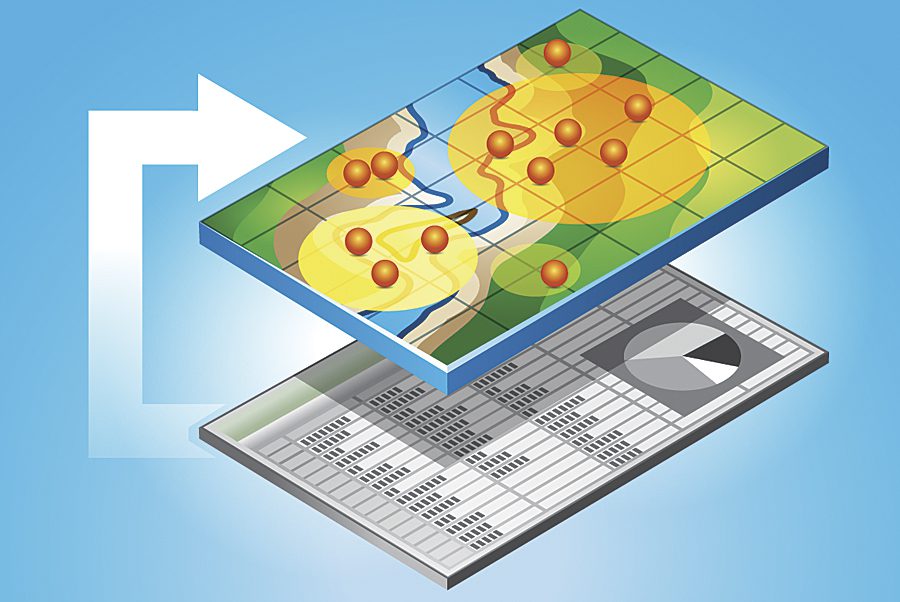Geospatial analytics refers to the process of analyzing geospatial (location-based) data through geographical information systems (GIS), global positioning system (GPS) technologies, and other tools to extract useful information from big data sets with a geographic or location component. Key applications of geospatial analytics include urban and regional planning, public safety and national security, environmental monitoring and analysis, transportation planning, and utility services. Utilities have significantly benefited from geospatial analytics to improve asset management, integrate customer data to better serve communities, and enhance service reliability through predictive analytics. Geospatial tools have enabled utility companies to visualize data, identify operational patterns and inefficiencies, and predict future demand and resource allocation in a crisis situation.
The global Geospatial Analytics Market is estimated to be valued at US$ 63.68 Mn in 2024 and is expected to exhibit a CAGR of 14% over the forecast period 2023 to 2030, as highlighted in a new report published by Coherent Market Insights.
Market Dynamics
Growing utility applications of geospatial analytics: Utilities rely heavily on geospatial technologies such as remote sensing, GPS, GIS to analyze spatial and non-spatial data from various assets and customers. This helps utilities to optimize resource allocation, predict demand patterns and outages, integrate consumer data for targeted campaigns, and streamline maintenance operations. Such applications have driven sizable investments in geospatial analytics by utility companies globally.
Increasing occurrence of natural calamities: The frequency and severity of extreme climate events and natural disasters have increased worldwide due to climate change. Geospatial technologies help disaster management agencies and utilities to monitor risks, simulate calamity scenarios, and respond efficiently. Integration of geospatial tools with IoT sensors provides real-time insights on affected areas for damage assessment and restoration planning. This acts as a major driver for the adoption of geospatial analytics.
Segment Analysis
The global geospatial analytics market is dominated by the asset management sub-segment. This is because asset management uses geospatial analytics extensively to plan resource allocation, manage fleets and track inventory in real-time. Utilities segment utilizes geospatial analytics for managing power distribution networks, water supply networks and monitoring civil infrastructure projects. Government agencies employ geospatial analytics solutions for defense, intelligence, emergency response and urban planning purposes.
PEST Analysis
Political: Geospatial analytics solutions help governments monitor borders, combat terrorism and natural disasters. Favorable government policies promote adoption of geospatial technologies.
Economic: Growing construction, logistics and transportation industries boost demand for geospatial solutions to optimize operations and curb costs. Real estate companies use geospatial data to assess property valuations.
Social: Increased smartphone and internet penetration enables access to geospatial applications for everyday uses like navigation, location-sharing and emergency response. Demand is driven by need for improved urban planning.
Technological: Advancements in AI, IoT, cloud and immersive technologies are fueling innovation in geospatial analytics. Developments in satellite imagery, geospatial sensors and UAVs augment data collection.
Key Takeaways
The Global Geospatial Analytics Market Size is expected to witness high growth during the forecast period of 2023 to 2030. The global Geospatial Analytics Market is estimated to be valued at US$ 63.68 Mn in 2023 and is expected to exhibit a CAGR of 14% over the forecast period 2023 to 2030.
North America is currently the largest regional market for geospatial analytics. This is attributed to significant investments by governments and private sector in GPS, GIS, remote sensing and other geospatial technologies. Asset management is the dominant sub-segment accounting for major share owing to extensive utilization of geospatial analytics for fleet management, resource tracking and maintenance planning.
Key players operating in the geospatial analytics market are Accell Group, Bodo Vehicle Group Co., Ltd, Butchers & Bicycles ApS, CERO Electric Cargo Bikes, DOUZE Factory SAS, Dutch Cargo Bike, G & O Family Cyclery, Gessato, Jinhua Jobo Technology Co., Ltd, Tern, Urban Arrow, Worksman Cycles, Xtracycle Inc, XYZ CARGO, and Yuba Bicycles LLC. Accell Group and XYZ Cargo are market leaders with strong product portfolio and global presence. New entrants are focusing on development of accurate geospatial visualization and analytics solutions integrated with AI/ML and IoT.
*Note:
1. Source: Coherent Market Insights, Public sources, Desk research
2. We have leveraged AI tools to mine information and compile it



